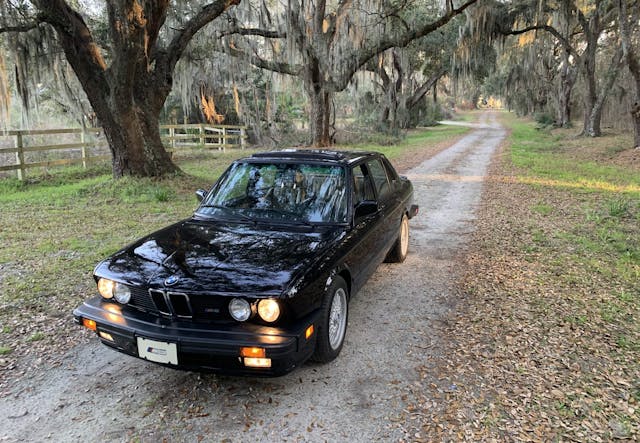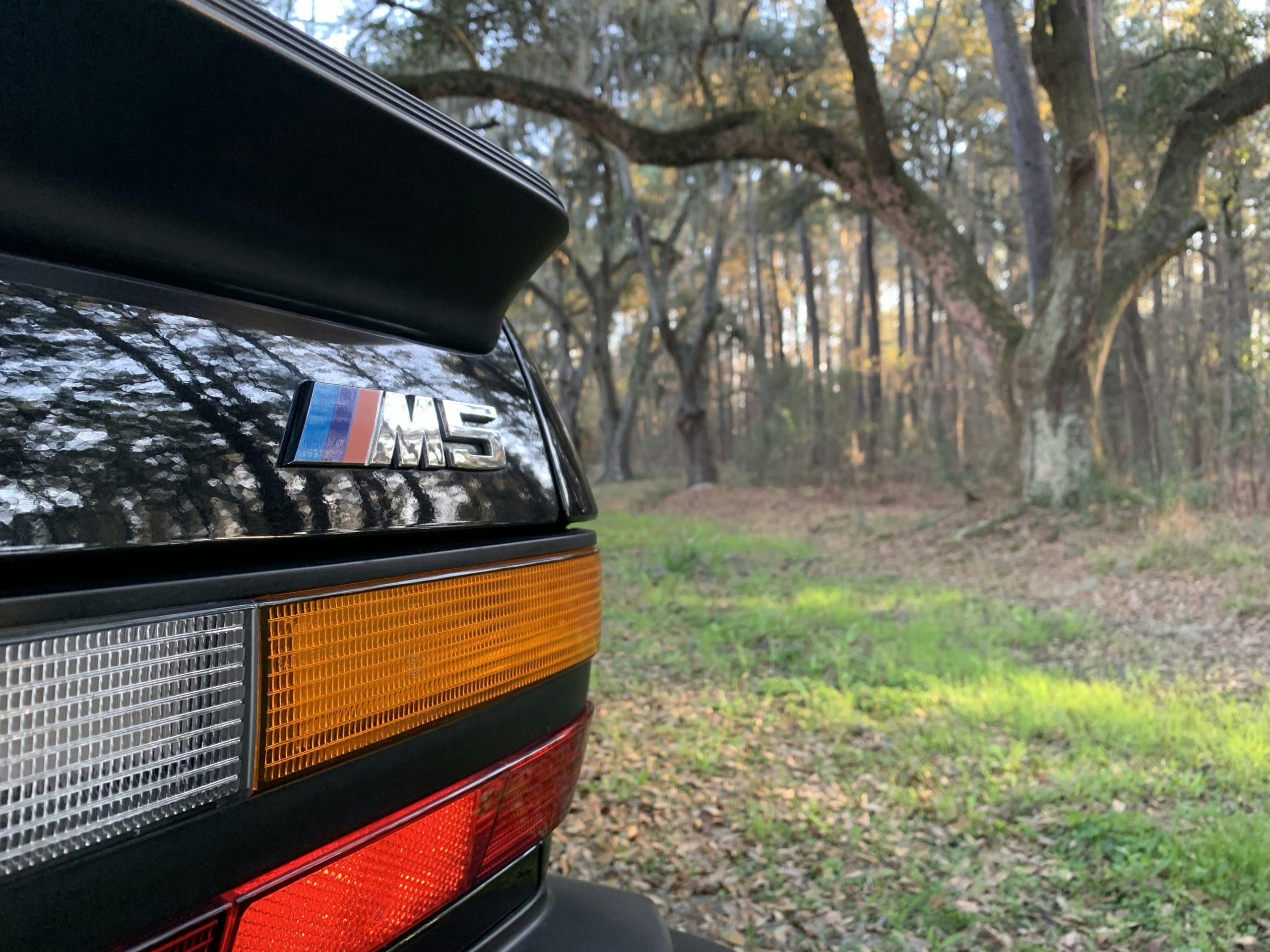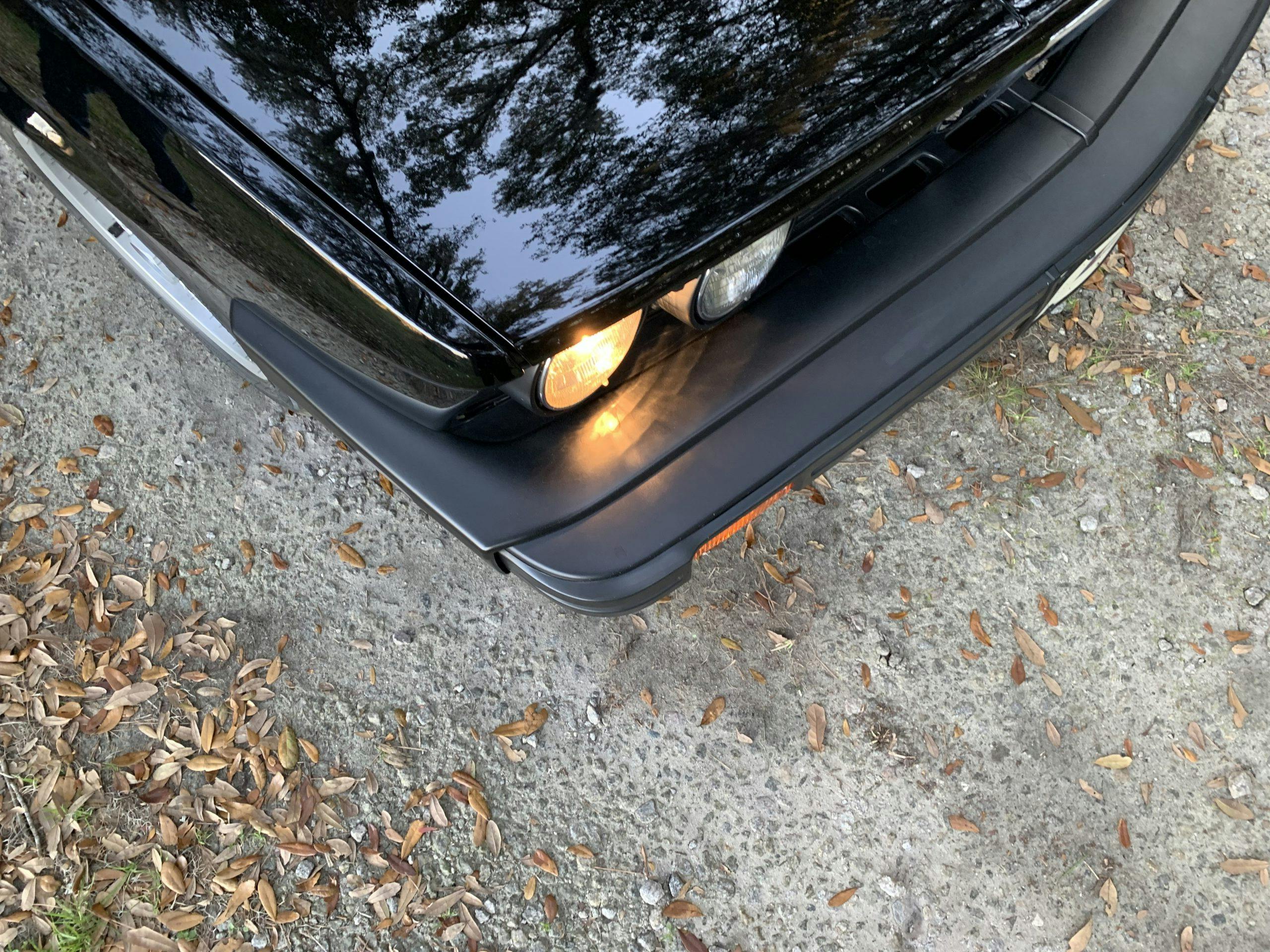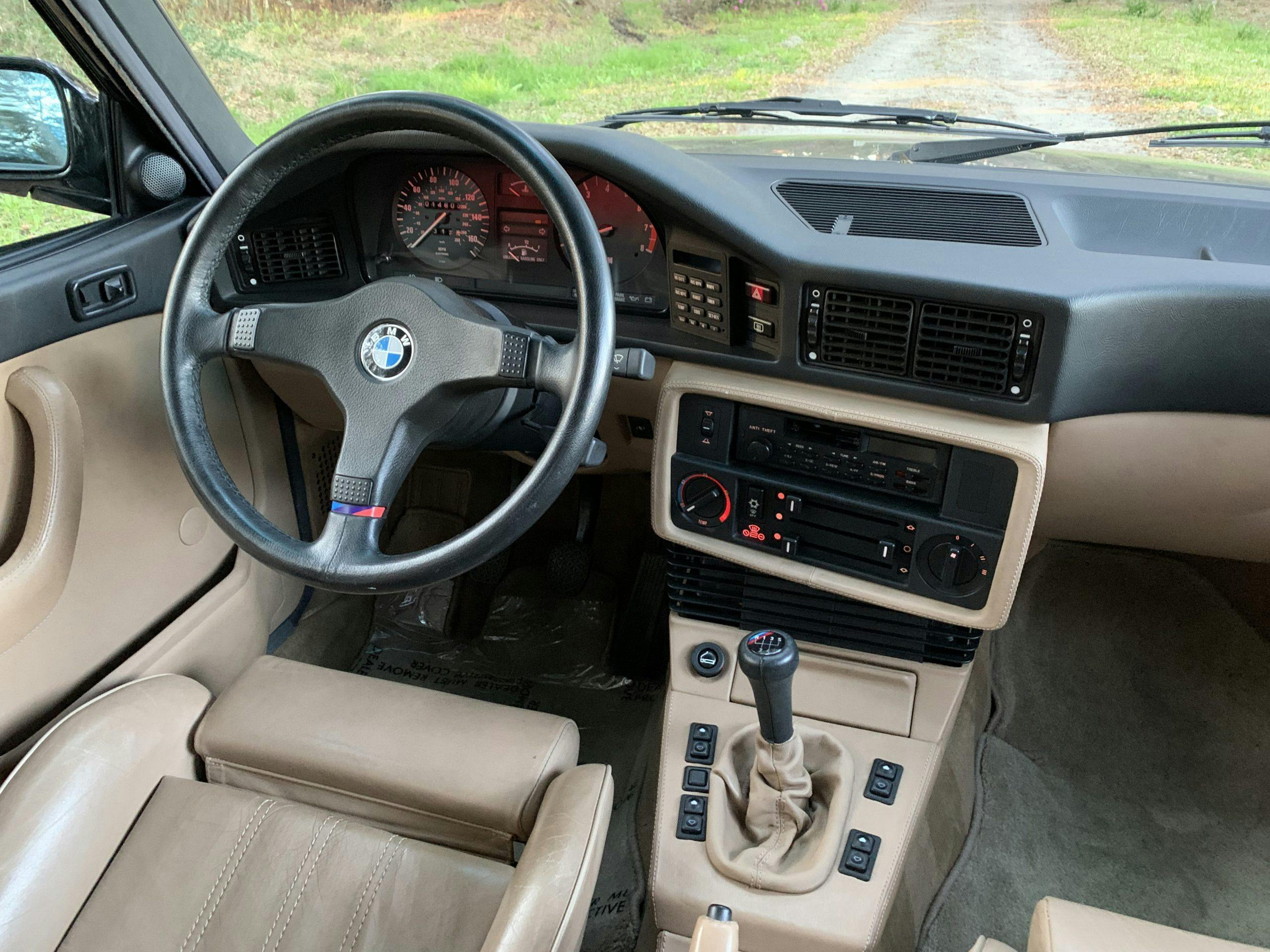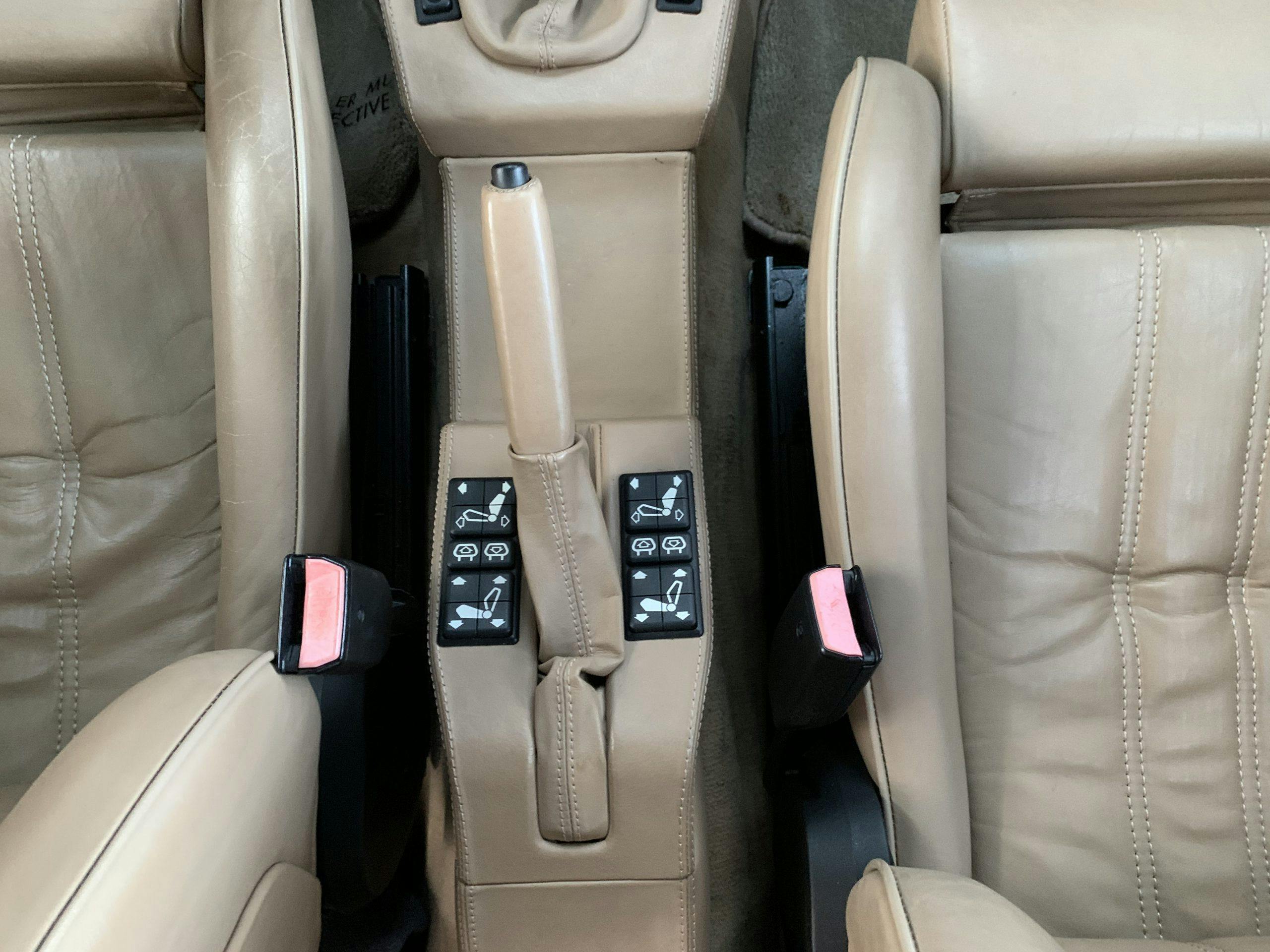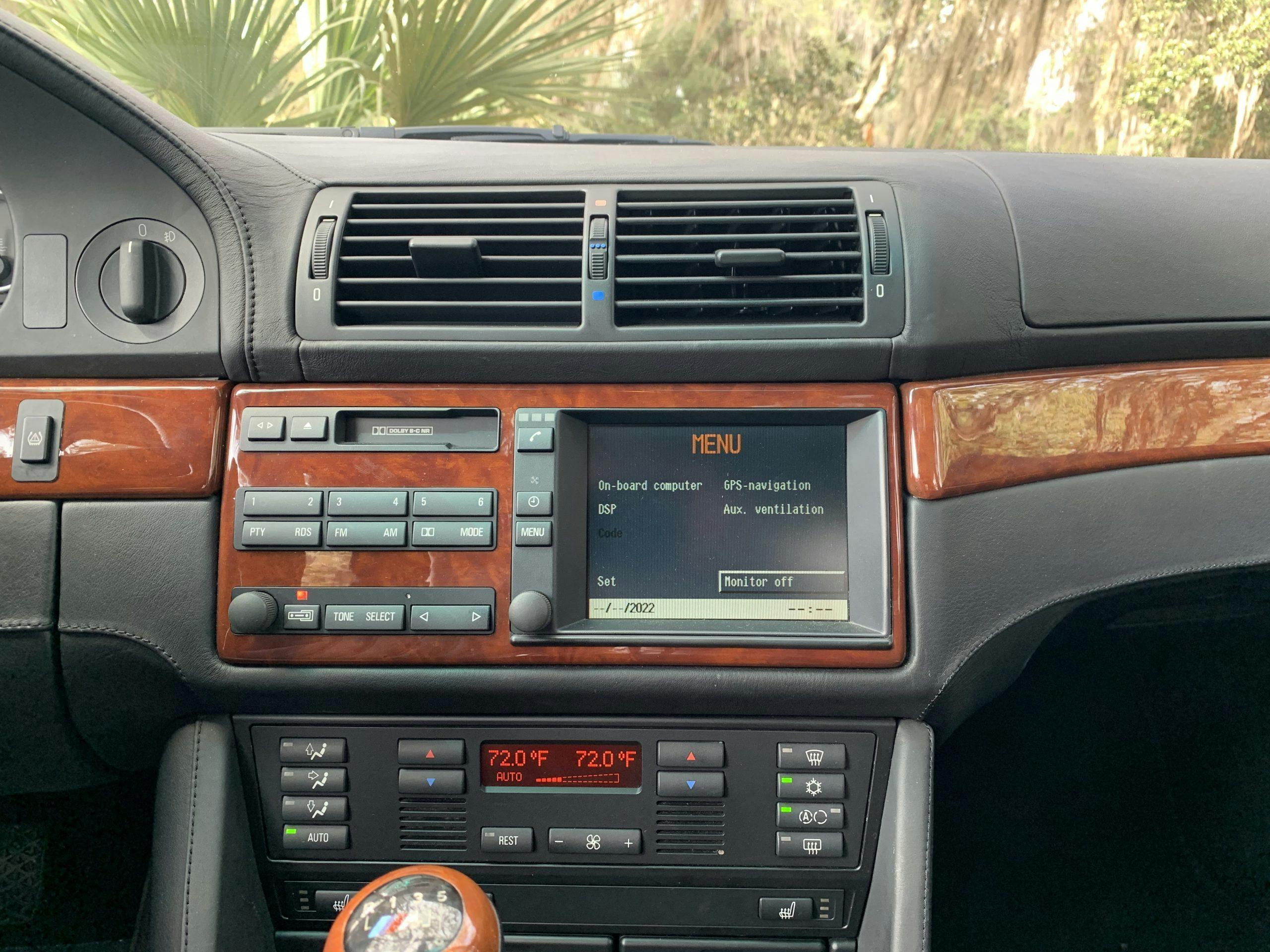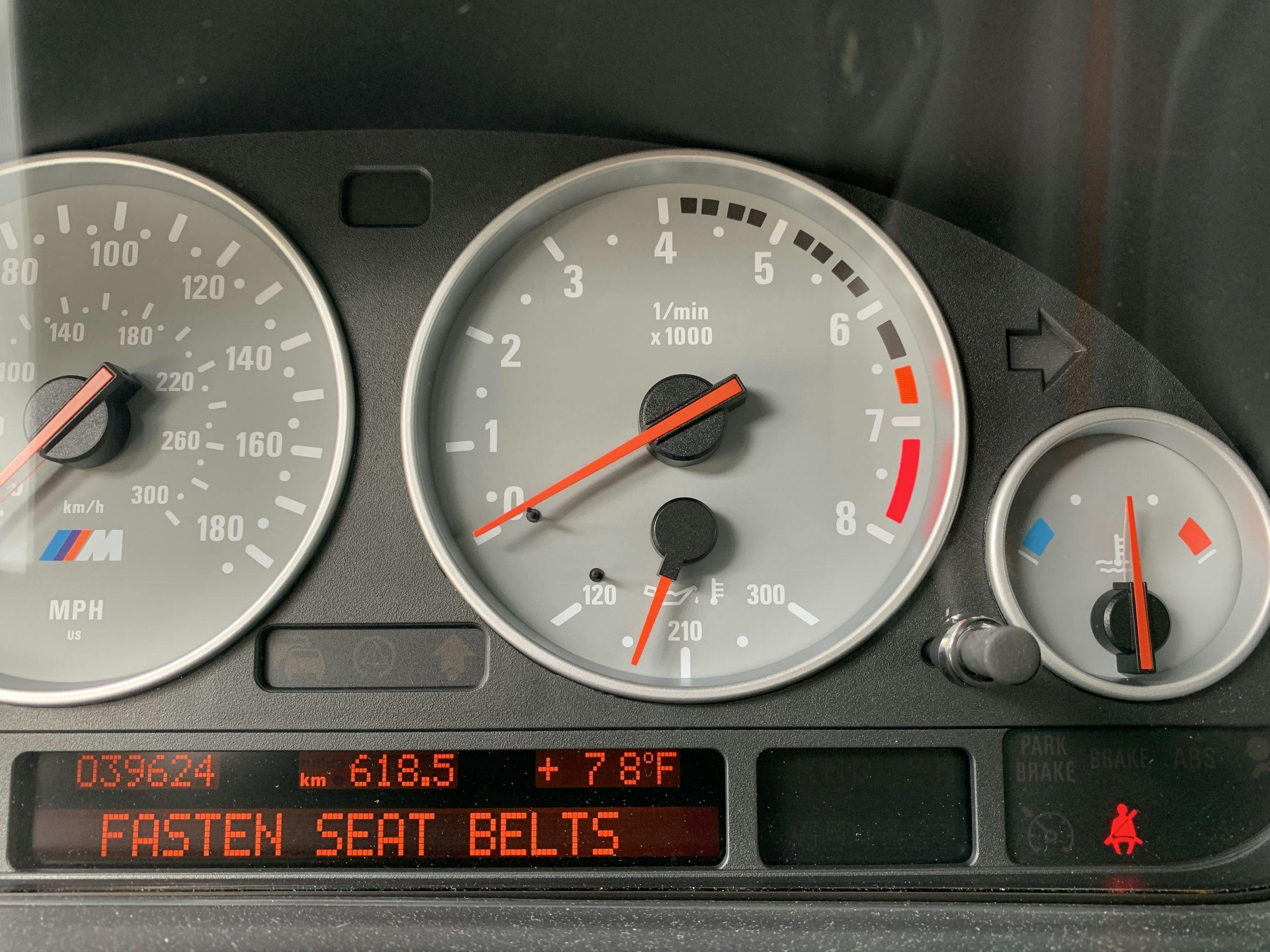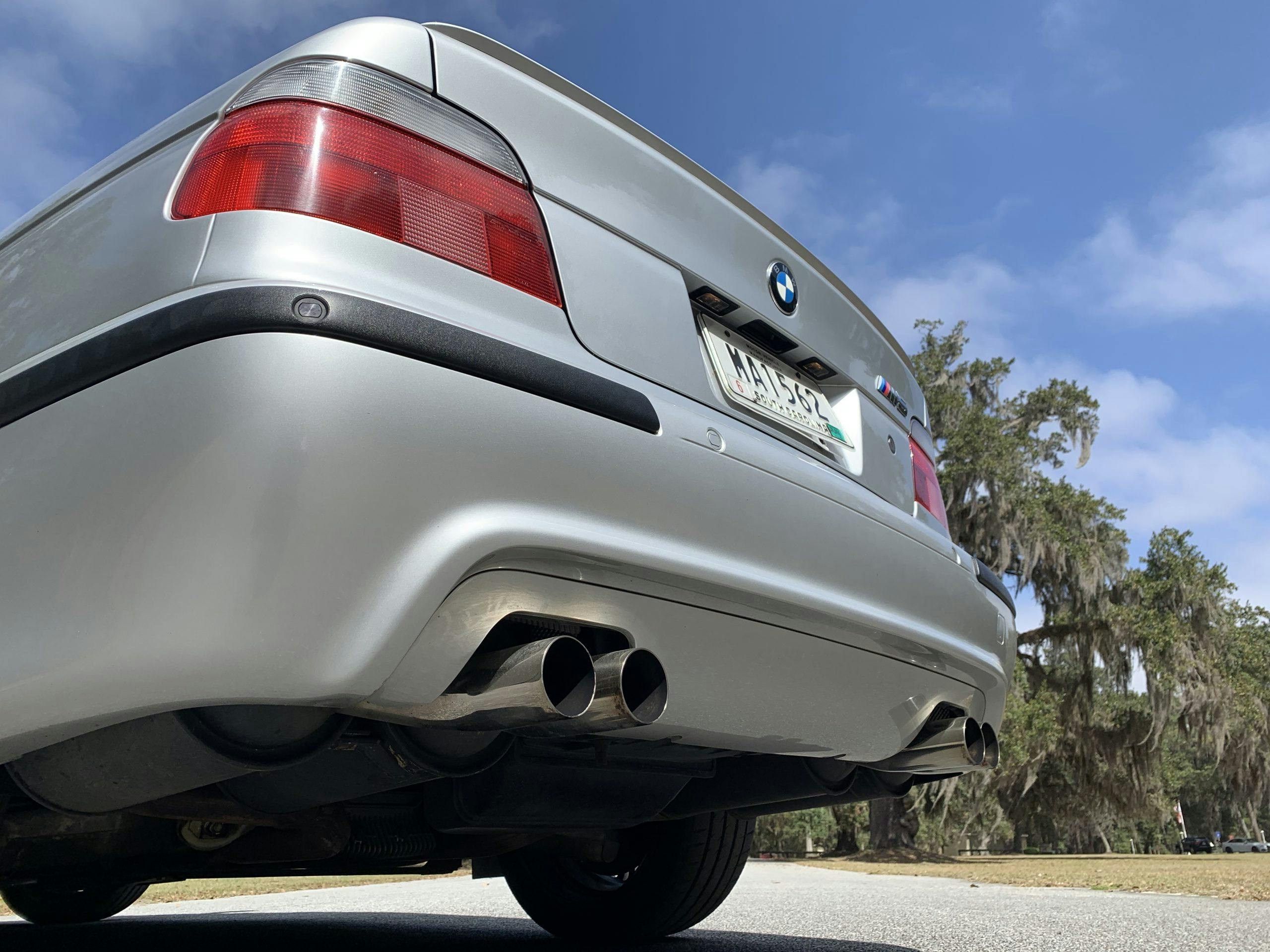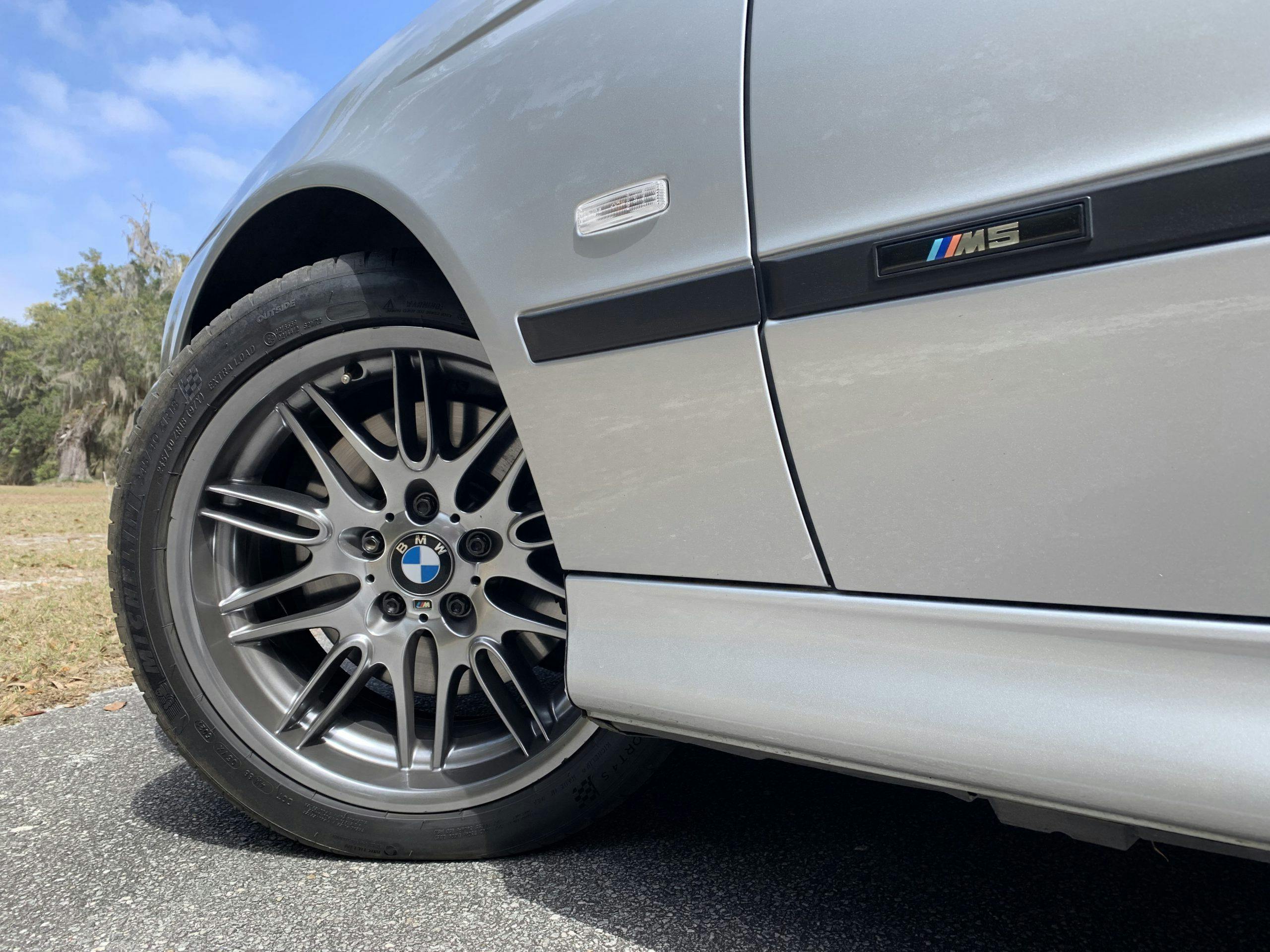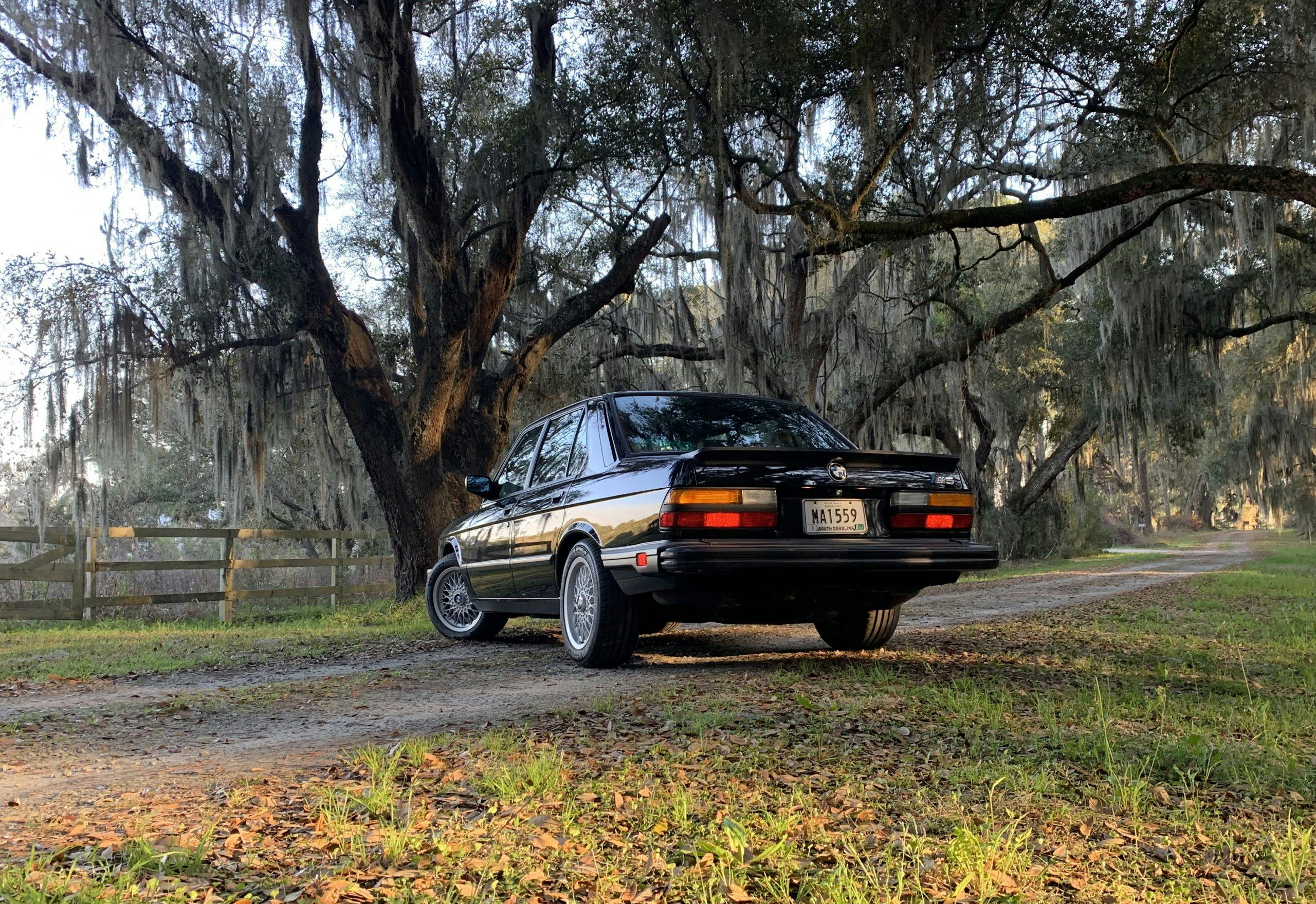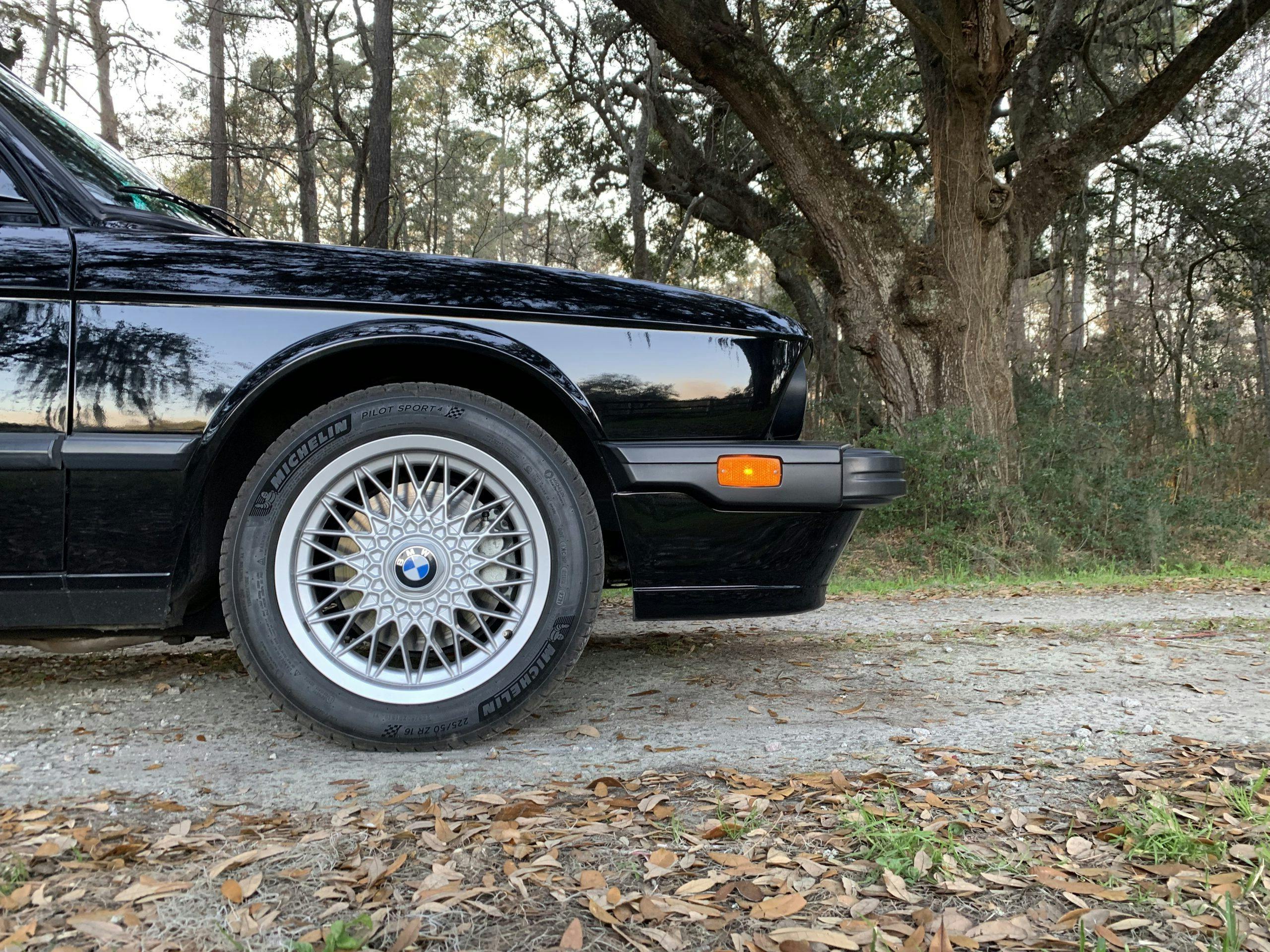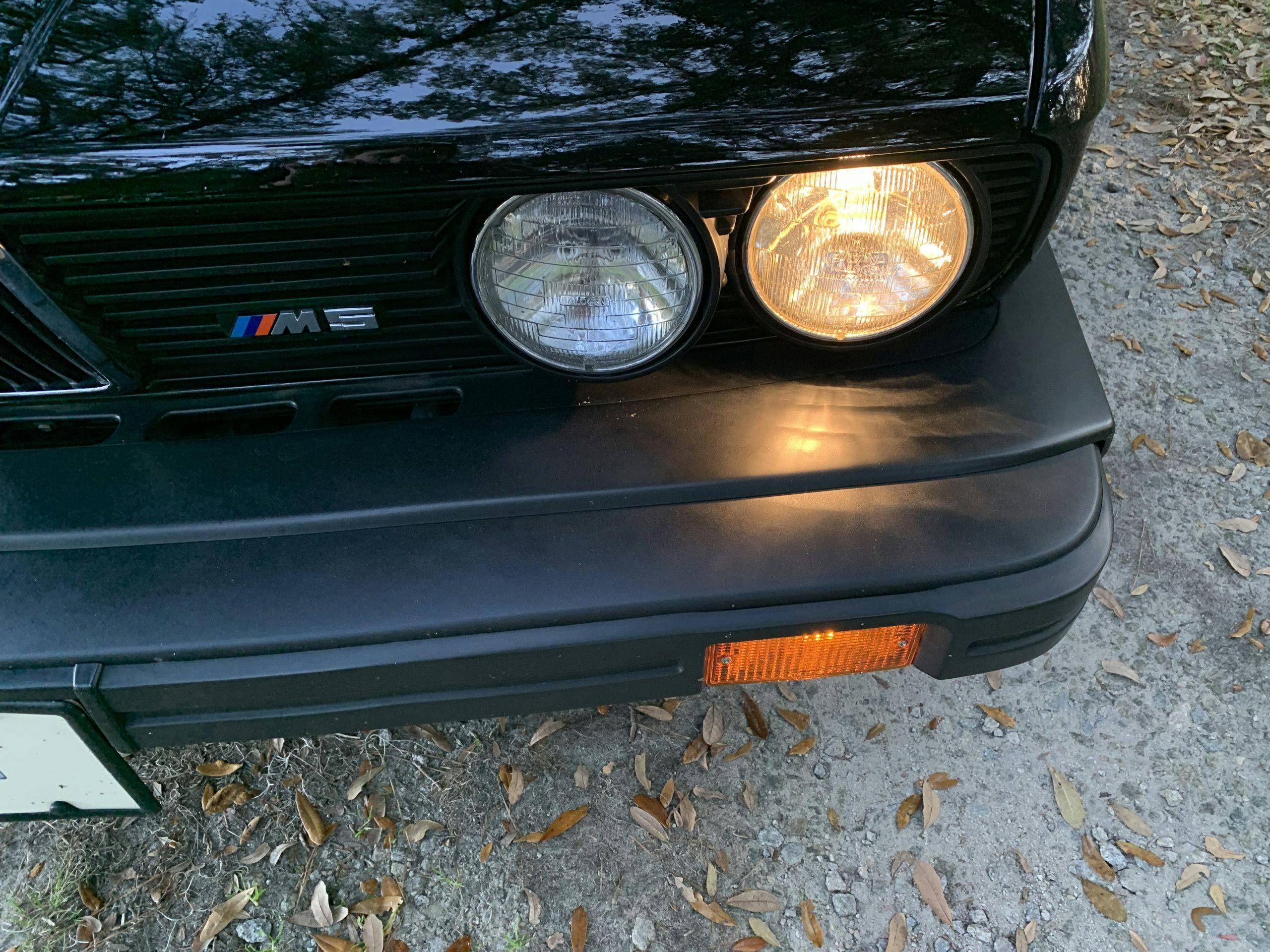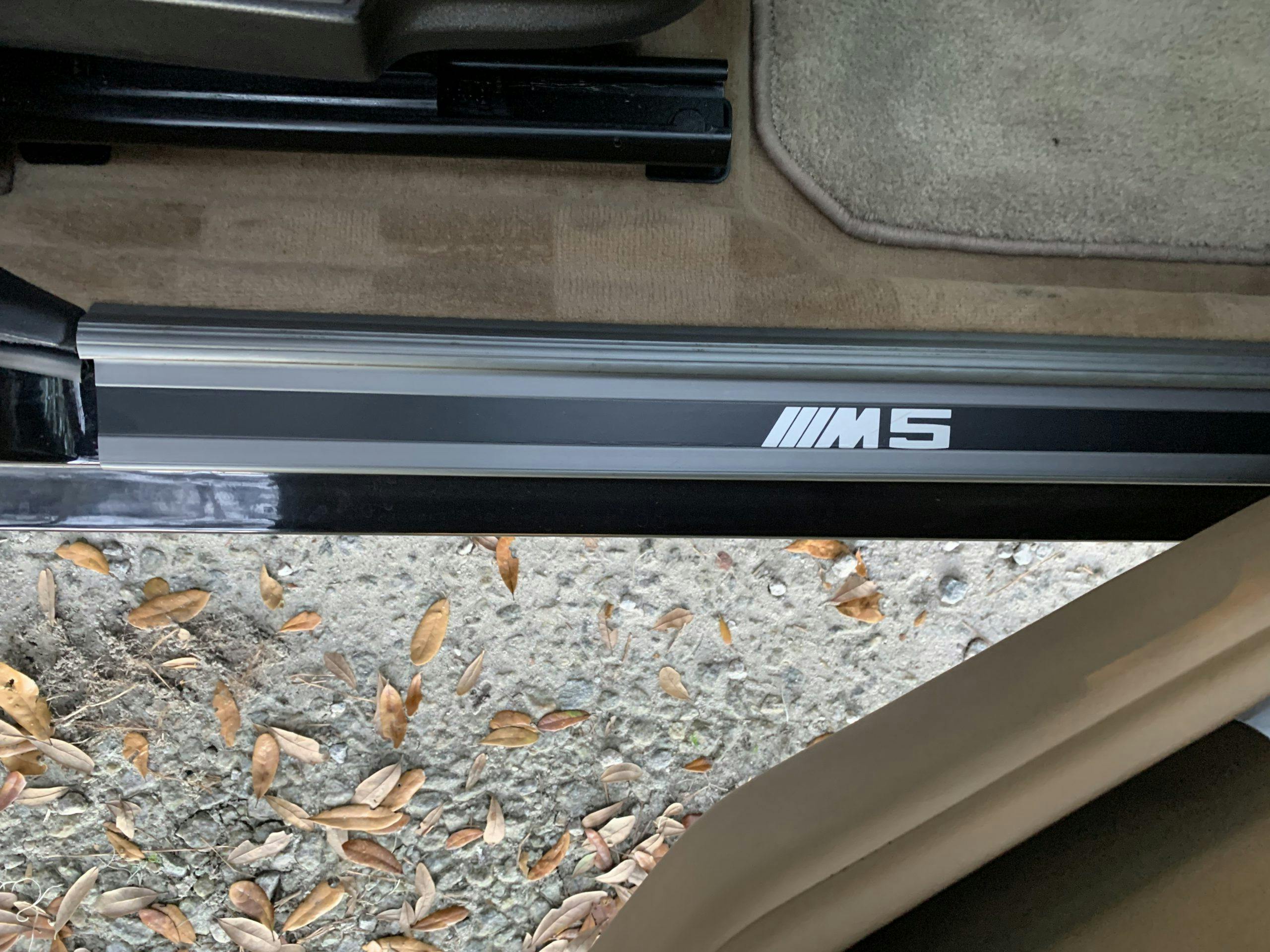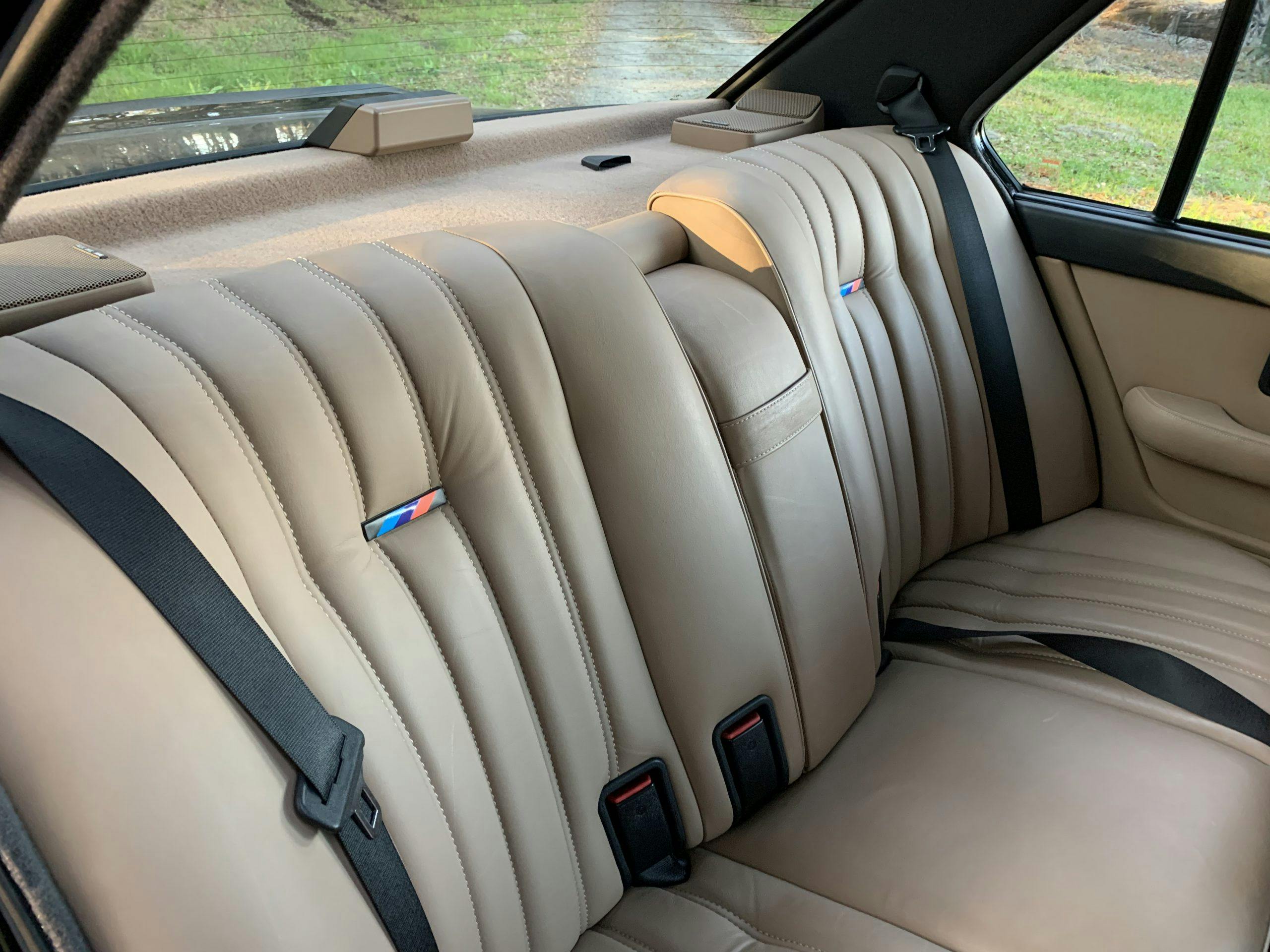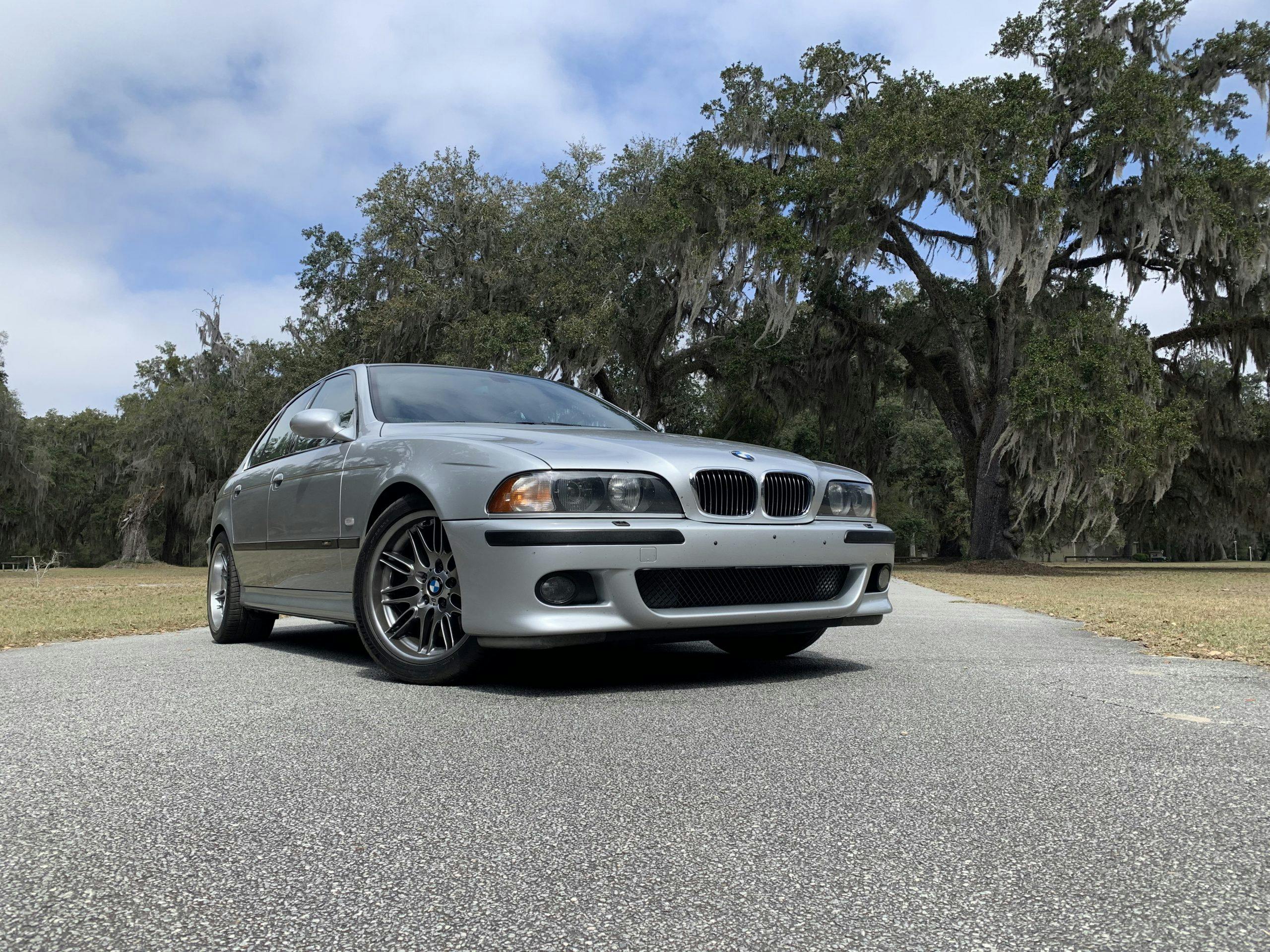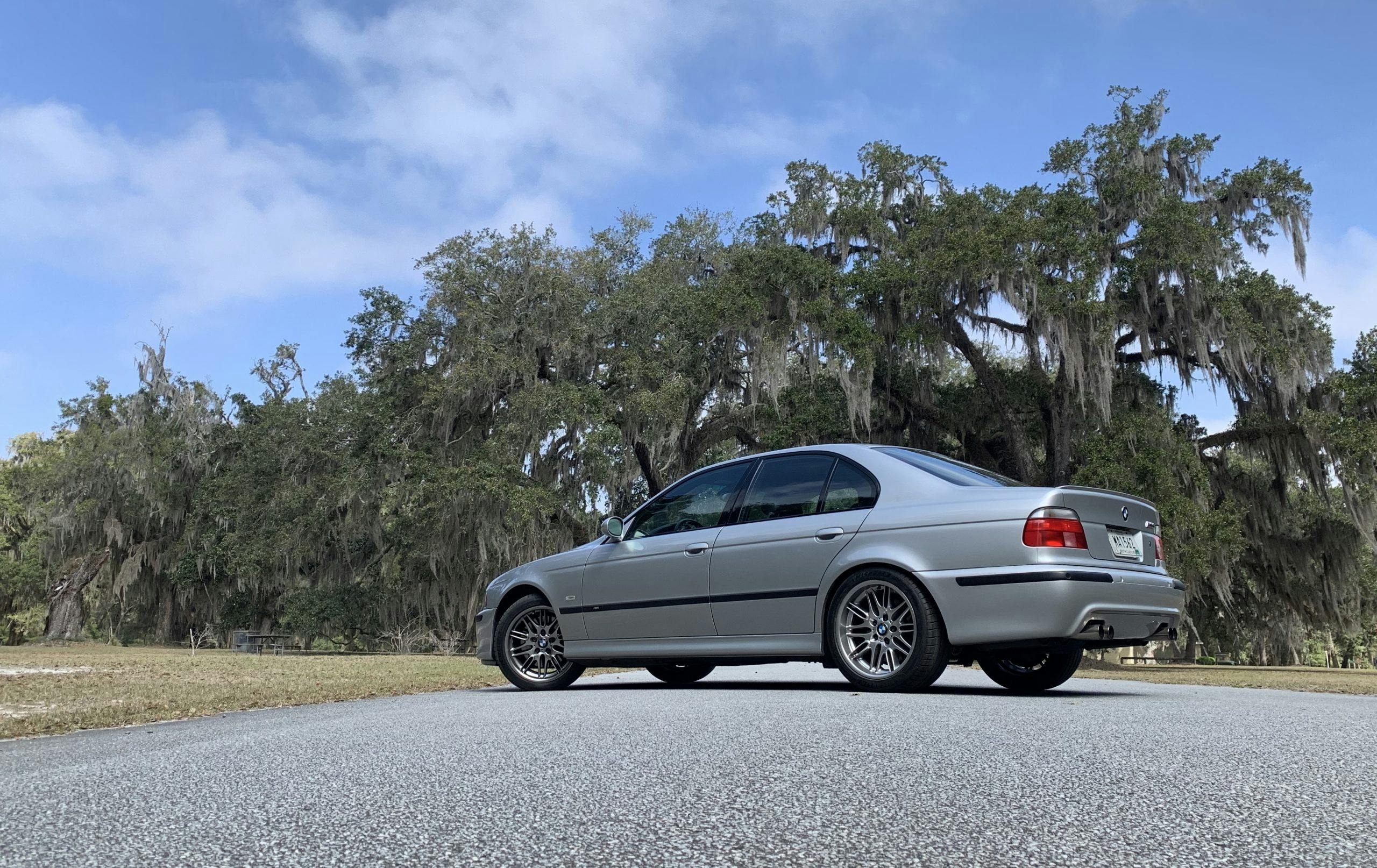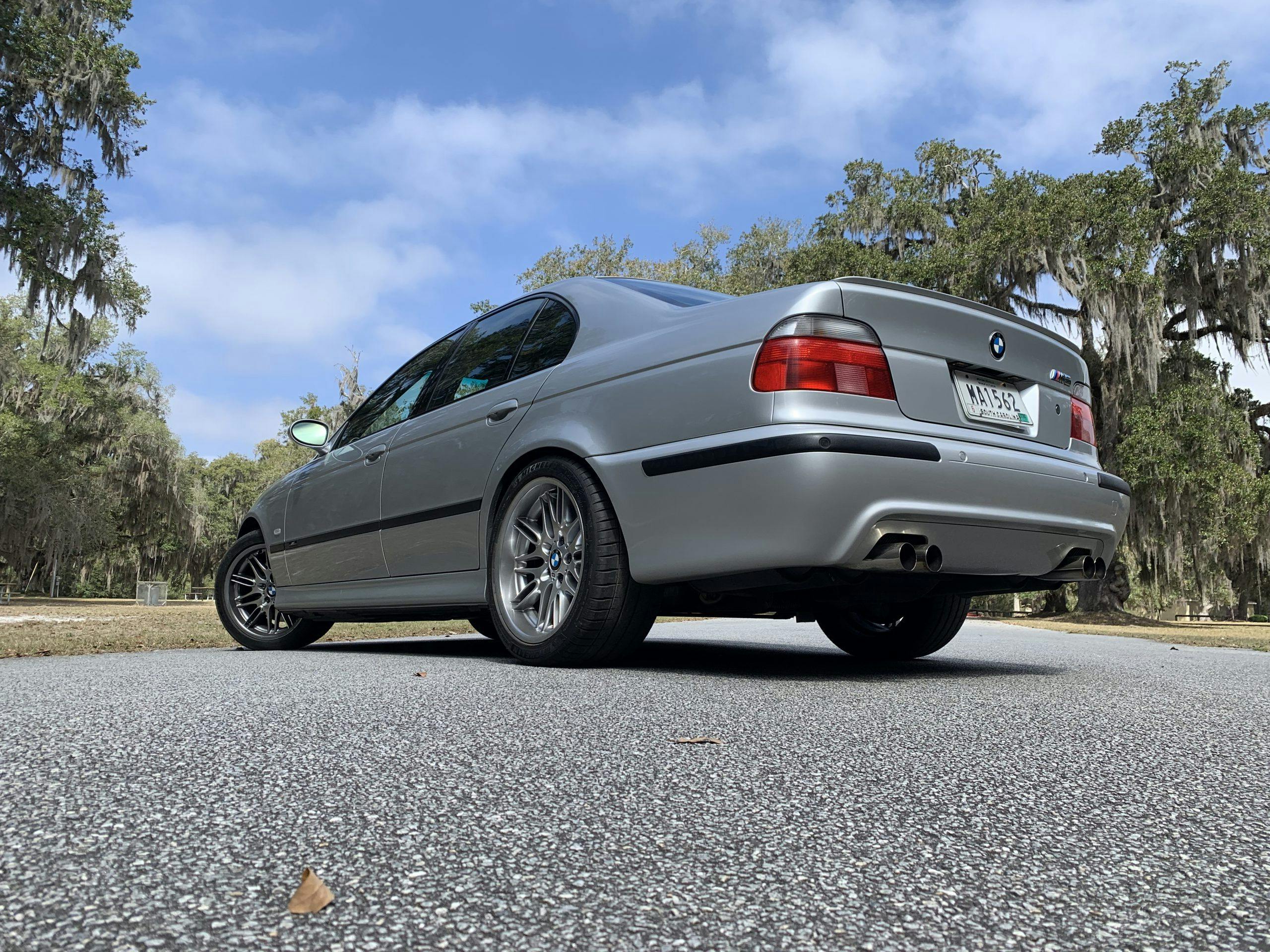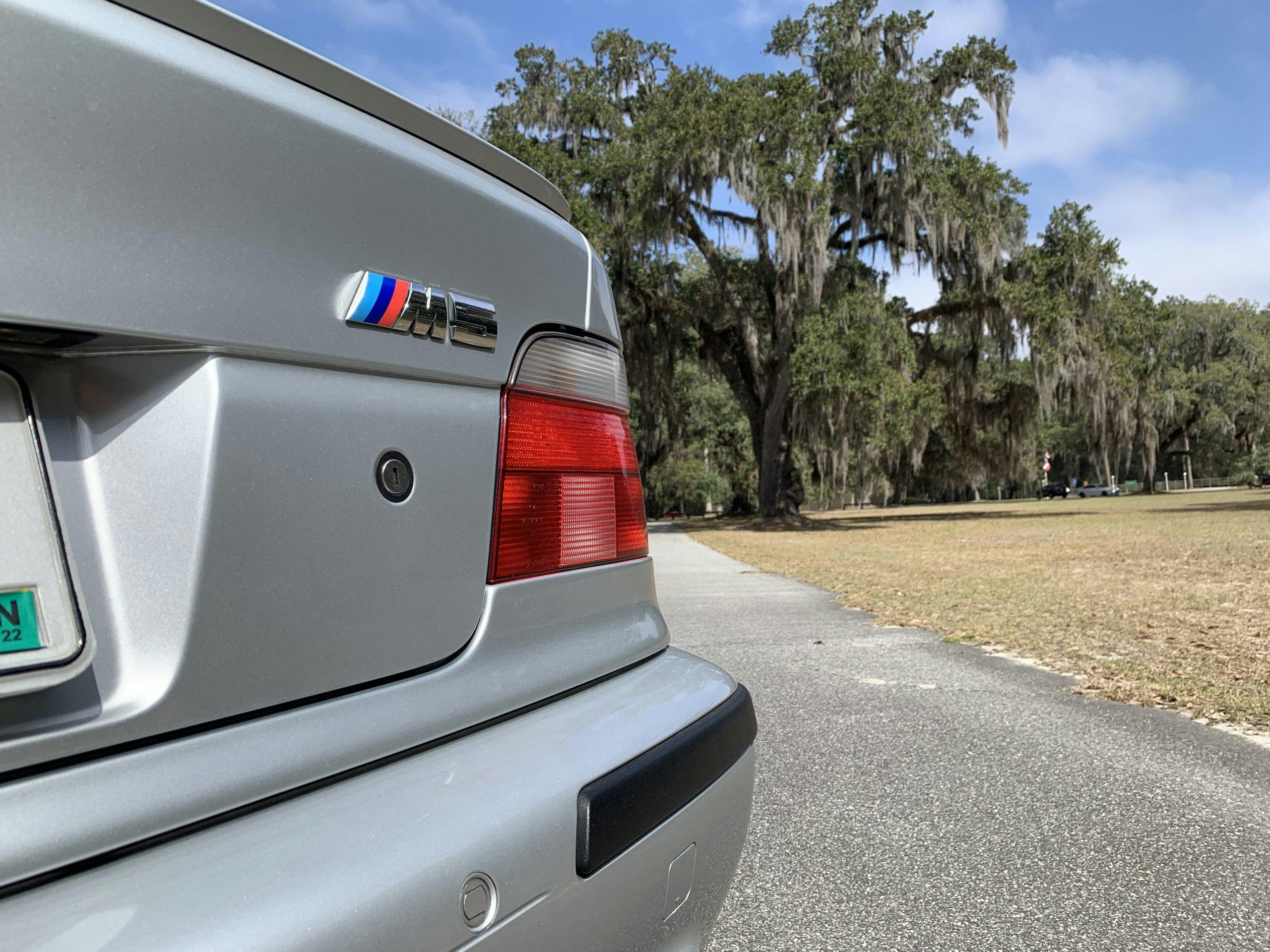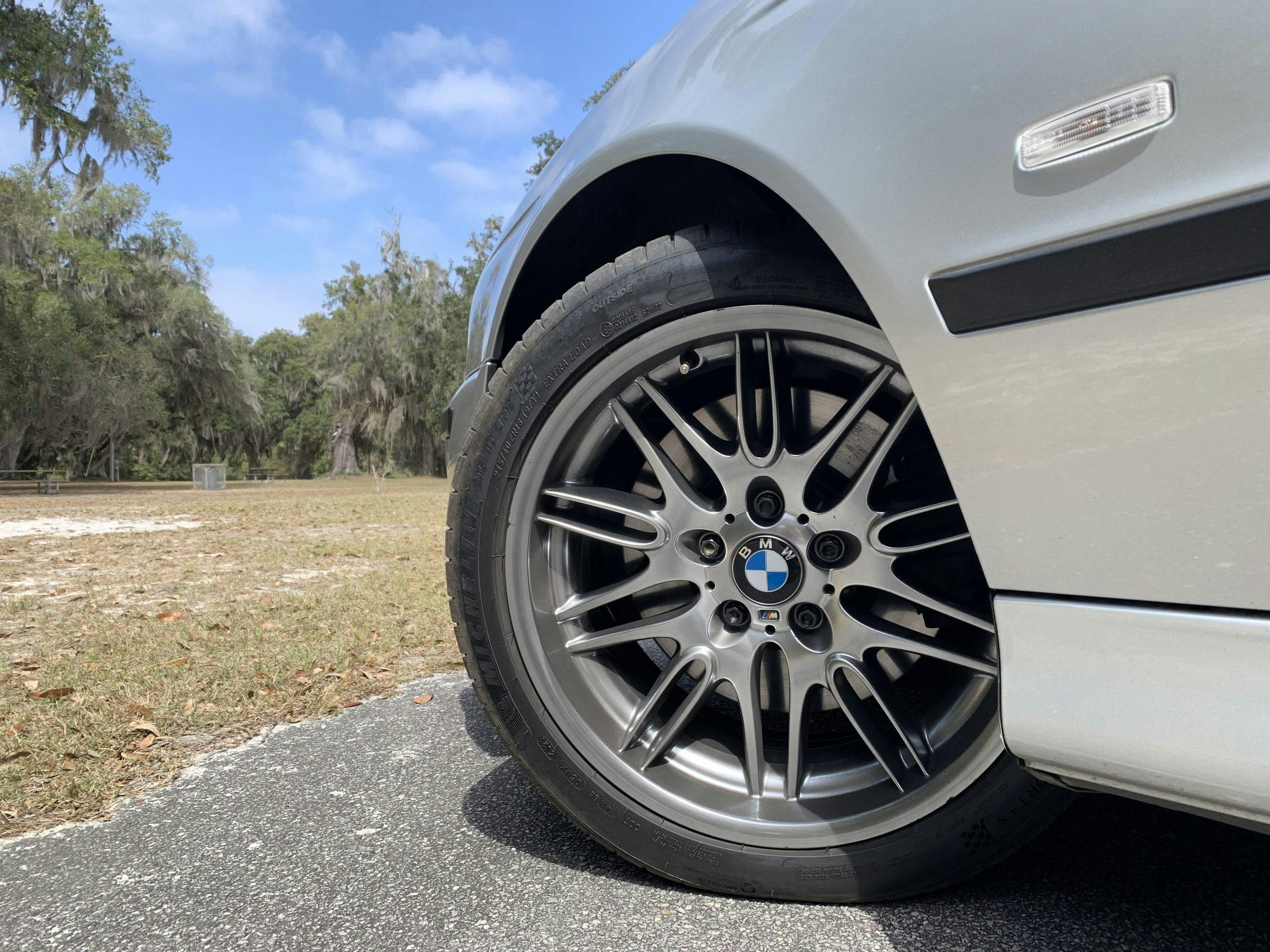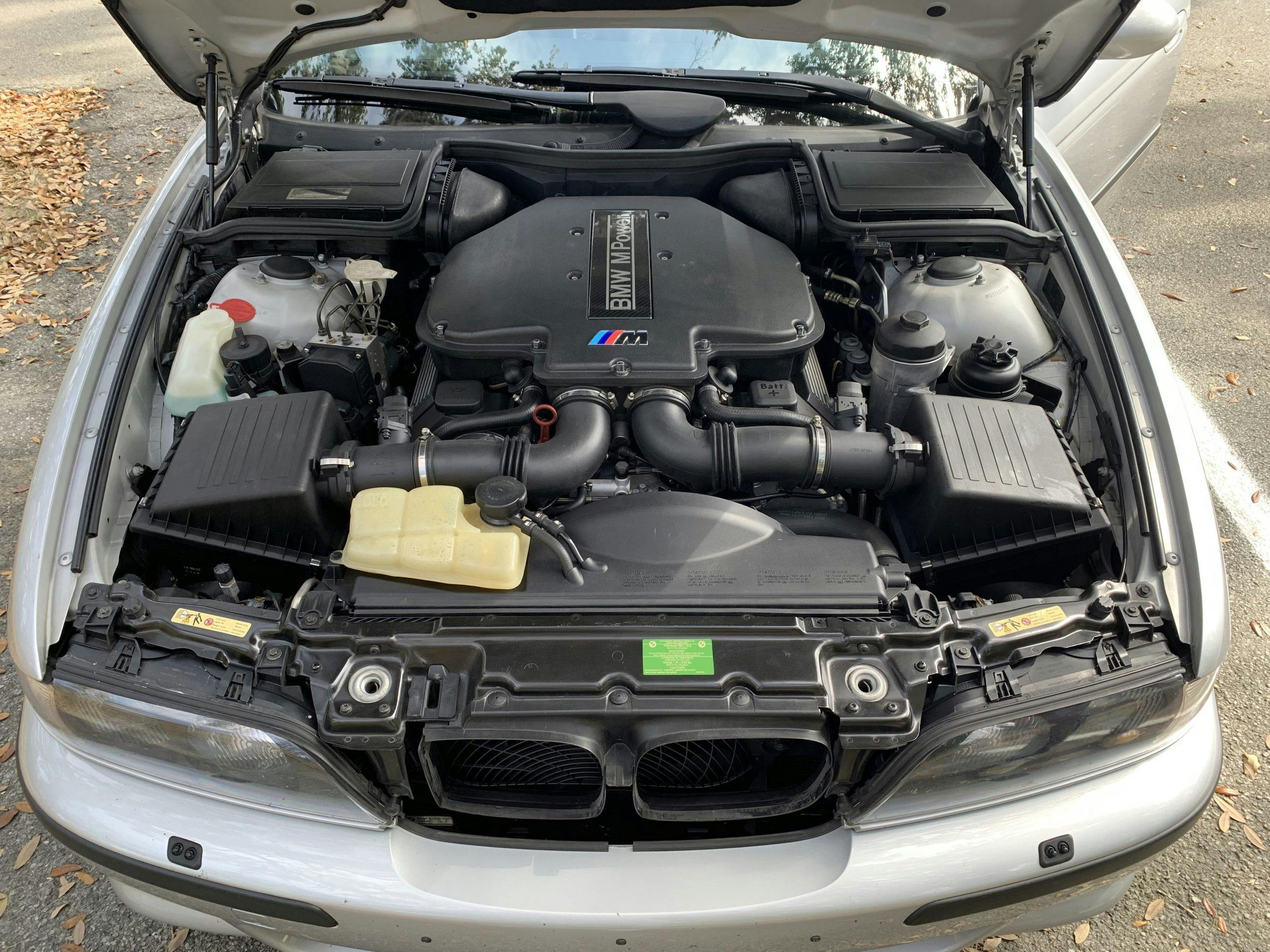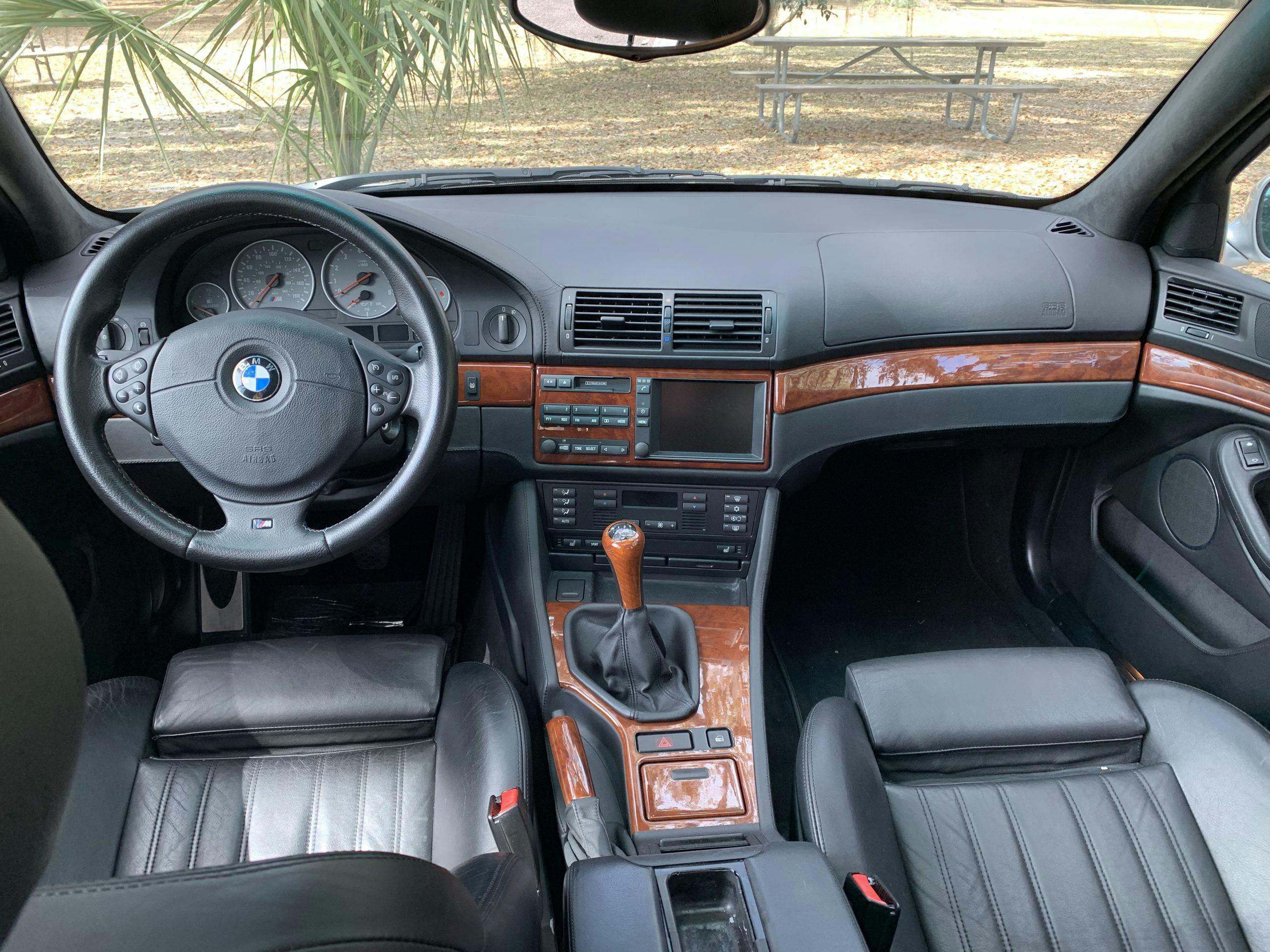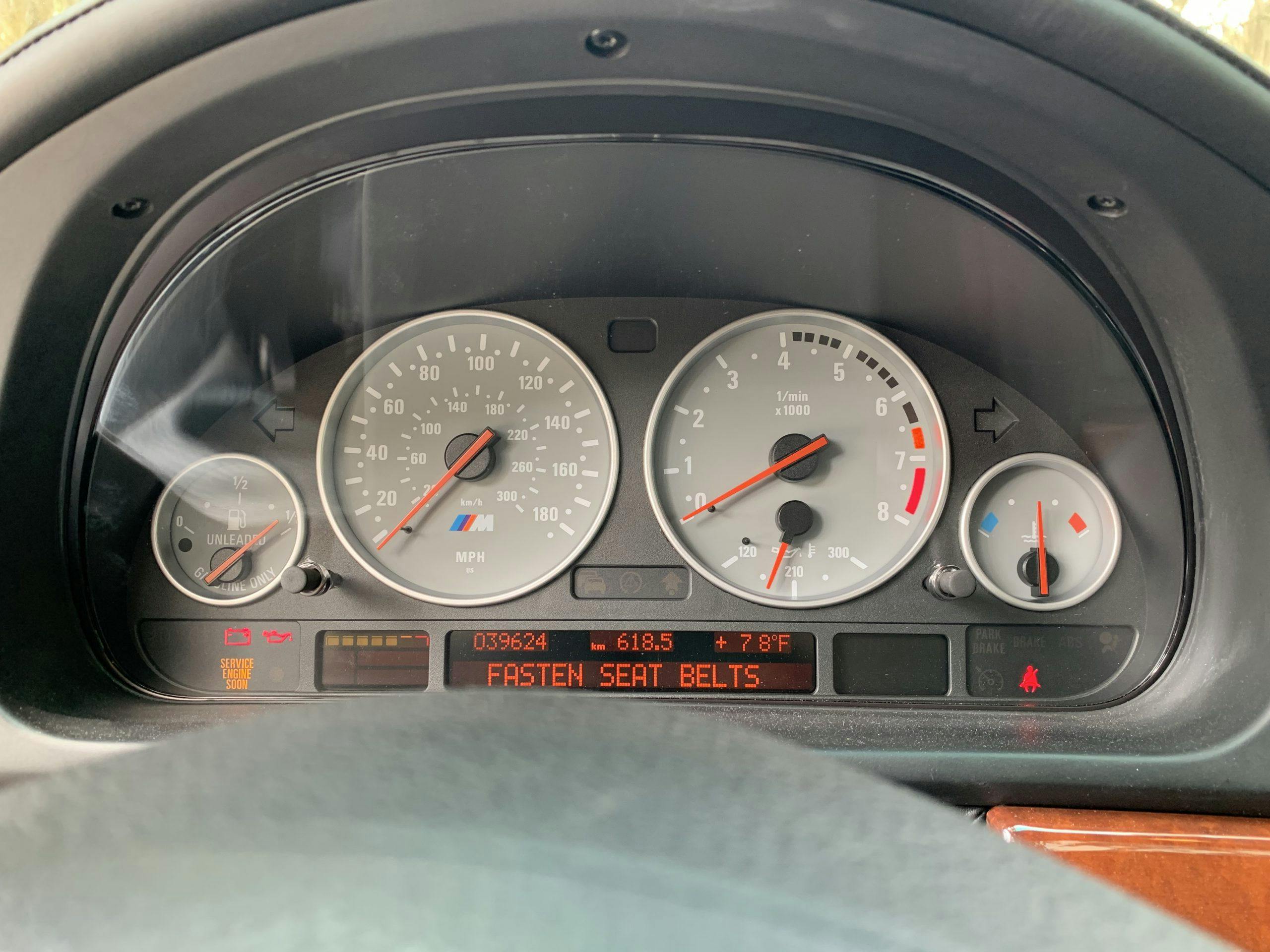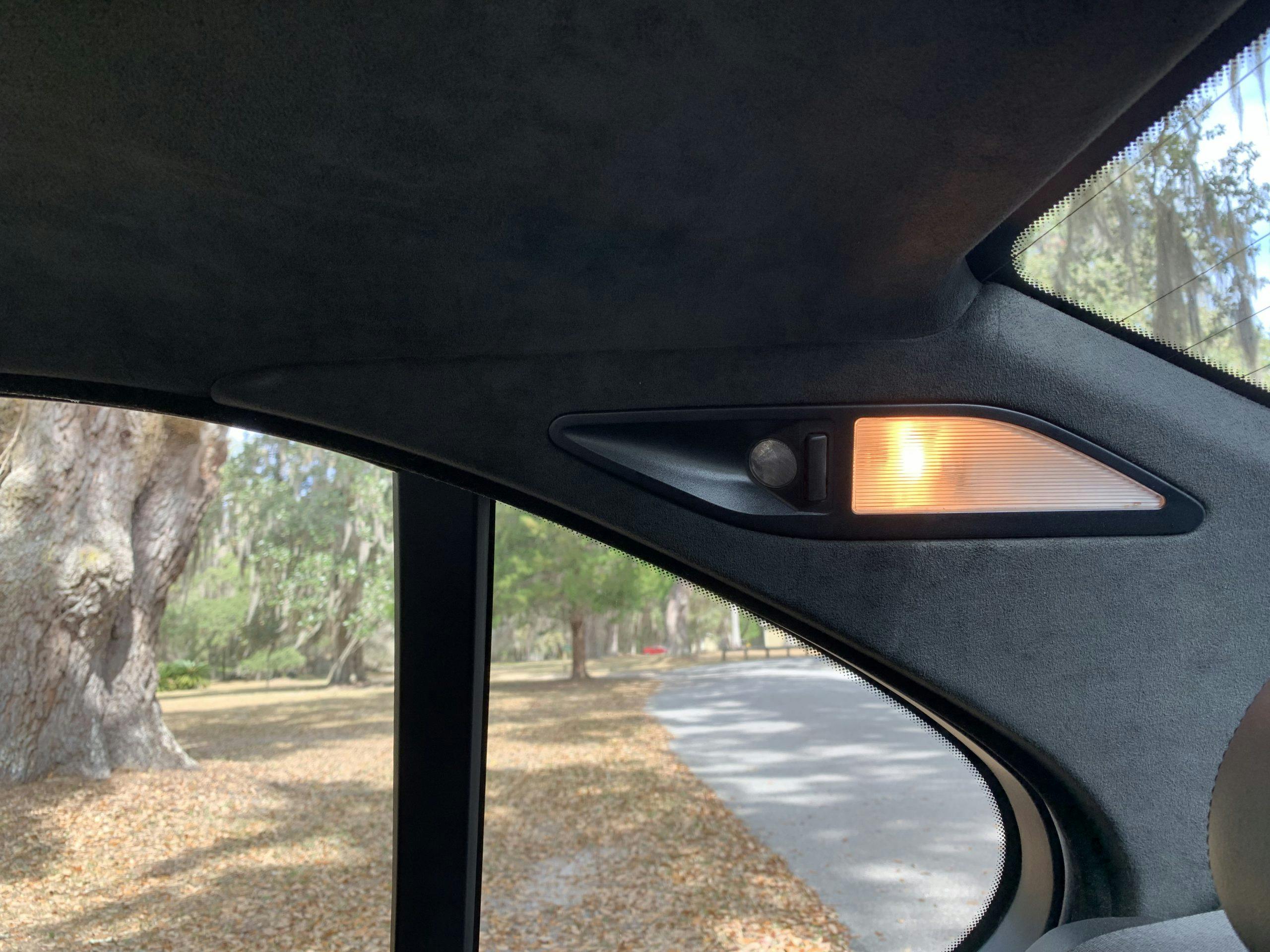A pair of M5s: The original E28 theme found grace in the E39
Two lanes to the left, the middle-aged, baseball-capped driver leans across the passenger seat of his bronze CR-V to yell in the direction of the black ’80s BMW. “That’s clean as ****! I love those cars!”
Rural South Carolina isn’t where you’d expect to find such an enthusiastic reception to the first M5. This is the domain of jacked-up 2000s Ram half-tons, yellow “trash” pines, erstwhile Pizza Huts rebadged as purveyors of Fine Food. This M5, known by cognoscenti as the E28, is an understated but brilliant Autobahn bruiser whose straight-six exhaust note can’t be heard over a cat-less Camry. As the pink Accord donk a few miles later bears witness, the American South doesn’t really do subtle.
And yet. At a gas station, the driver of a battered 2000s Wrangler Rubicon with a “Mudweiser” bumper sticker loops back into the BP for a longer look, a sunburned elbow resting on the Jeep’s yellow door.
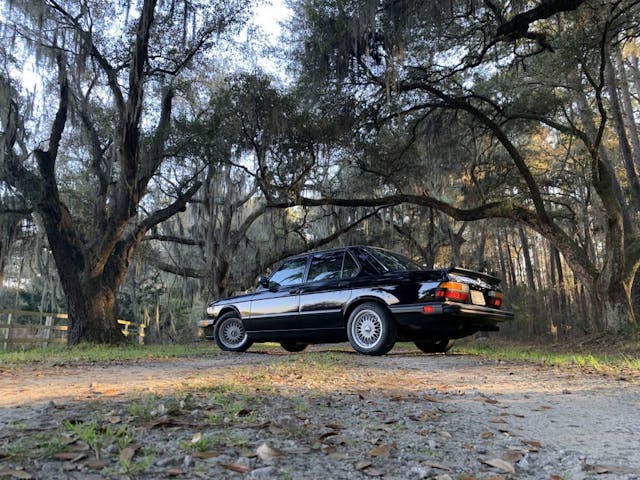
I wasn’t expecting to be so won over by this car, if only because of the weight of Bavarian history borne on its slim shoulders. It isn’t the first regular-production BMW sedan to wear the Motorsport M—that honor belongs to the 1980 535i—but this is the model that built the mystique of the M GmbH. In the ’80s, this car broke categories: Four-doors were staid. Sports cars got nimble chassis and hot engines … until BMW looked at its M1 supercar, then back at its E28 5 Series sedan, and said: “Why not?”
The E28 M5 got a 286-hp version (256 hp in the U.S.) of the M88, an engine which BMW developed for the M1 after realizing that an F1 powerplant didn’t quite fit the budget. So BMW took its cast-iron M30 straight-six, bored and stroked it to 3453 cc, and engineered as much F1 tech as possible into a new cylinder head: twin camshafts and four valves per cylinder. BMW Motorsport also upgraded the fuel injection system, swapping out the original Kugelfischer system for a Bosch setup. More durable than a Ferrari mill and more capable than some Porsche engines, in Group 5 Motorsport tune this twin-turbo M88 made 1000 hp. The E28 M5 got a naturally aspirated (and still hand-built) version of the M88, becoming a 150-mph sedan. That phrase broke brains in the ’80s—imagine a Cadillac Sedan de Ville with the C4 ZR1’s Lotus-engineered V-8.

“The M5 proves that … now is the time to go ape,” wrote Car and Driver‘s Larry Griffin in 1987. Thirty years on, the suspension which he describes as taut feels floaty—partly because of 21st-century norms, and partly because the divided two-lanes between Charleston, South Carolina, and Savannah, Georgia, offered nothing but a few sweepers and a roundabout. The lusty six-cylinder is not the hot-rodded shrieker that the later Z3 M Roadster’s is, and while acceleration is gutsy, a modern passenger doesn’t register the same disconnect between looks and performance as Griffin once did. The aesthetics of M have changed, too; the tri-colored sticker on the center spoke of the slim-sectioned steering wheel read as “flashy” in 1987. In 2022, the E28’s decoration evokes Scandinavian restraint—just park it next to a matte-green, gold-trimmed CS.
Even on a sunny, 83 degree day without music or robust air conditioning, this car is winsome. The cabin, with its ample, upright glass divided by slim pillars, is free of digital screens or chrome trim. With all four windows down at 60 mph, there’s minimal buffeting. Even as a passenger, you want nothing more than to stick a hand out the window, inhale the smell of lush leather, and let the car gulp miles.
***
Even setting aside the increasing baseline of performance, and the changing tastes of the decades, the M5 badge has been worn by a wide variety of characters. Three different engines powered four generations before forced induction arrived for the 2012 model year. As a counterpoint to the E28 M5, we chose the third-gen E39, a V-8-powered model sandwiched between the E34, with its M88-derived S38 inline-six, and the E60, with BMW’s first (and to this date, only) V-10.
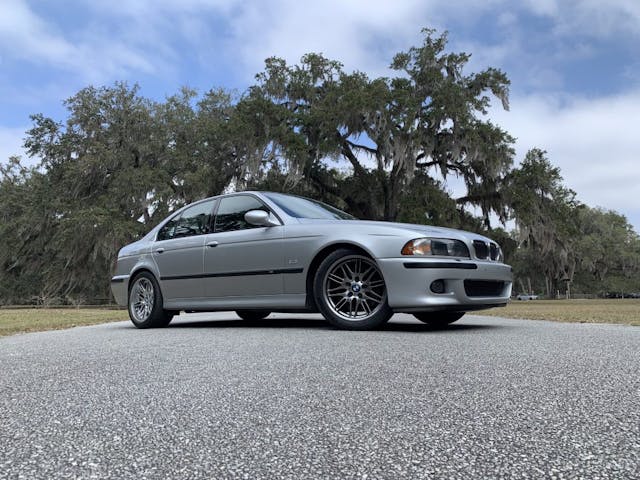
This model’s success in the U.S. market, in which it arrived in 1999, shows how strong (widely recognized) the brand had become in the 11 years since the line began. According to Jackie Jouret’s BMW in the 20th Century, the 9992 M5s snapped up by American customers accounted for nearly half of global sales. (For perspective, the third-gen M5 outsold the first by a factor of 8 in the U.S.) M offerings had evolved and multiplied. The M3, now in its second iteration, was now more of a grand tourer than a “let’s go racing” special, and had sold in droves. M had even built a roadster, dropping the M3’s S50 straight-six into the Z3 convertible. An enclosed hardtop version, which customers would dub the Clown Shoe, followed a year later.
Given its eclectic stablemates, and the grand touring attitude of the E36 M3, the M5 had room to grow—in power and in luxury. M took care of the first by thoroughly reworking the 5 Series’ first V-8, starting with a new intake system centered around eight electronically controlled throttle bodies. Motorsport then added its first set of hydraulic valve adjusters and created a semi-dry sump system by adding two more oil scavenging pumps. The engine’s heartbeat is managed by M’s first double VANOS system, in which both intake and exhaust camshafts are variably controlled. A sequence of red lights in the tachometer indicates the redline, which rises higher as the engine warms, the lights gradually blinking off.

The 1999 M5 didn’t come cheap. M pushed way upmarket with the E39, pricing the M5 just under $74,000—the equivalent of $125,000 today. (M5 CS money.) The M models styling varied only slightly from that of the 540i, in tradition M fashion, but those who spotted the generous lower air dam, four tailpipes, and the handsome 18-inch wheels would raise their eyebrows high in appreciation.
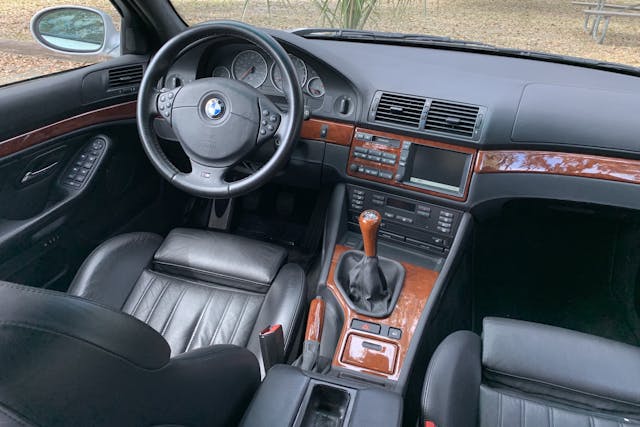
The grunt of 400-hp and 376 pound-feet of torque, easily accessed with the six-speed manual, is made even sweeter by a high-quality cabin. The rich smell of leather hits as soon as you open the heavy door. Our black upholstered ’99 eschewed a two-tone interior in favor of a suede headliner and high-gloss walnut trim. An onboard computer is accessed via a knob and a palm-sized screen in the dash, which also relays satellite information from a CD changer in the trunk (if you brought one, which we didn’t.) Cruising along in sixth gear, you feel more like you’re in a bank manager’s office than a vehicle. Spacious but not airy, the sumptuous interior is nearly Rolls-Royce quiet. Kick down a few gears and raise the revs, and you’ll provoke a muted roar from the V-8, along with a shove of wonderfully linear acceleration. The line between mannered and menacing is thin in this car—but one personality trait never intrudes upon the other. You get the sense that this M5 is as comfortable at 10 percent at it is at 90.
***
BMW’s M models are aging gracefully, and their street presence is only part of the equation. Thanks to a 2015 spike in value, the 14,000-mile E28 featured here is nearly a six-figure car. Since 2016, first-gen M5s are only trending up. As of March, 2022, #2 (Excellent) values for first-gen M5s are up 59 percent, with insurance quoted value not far behind for models in the same condition—27 percent over the same time period. It’s important to place the first M5 in context, however. The original M3 has recently skyrocketed, and its on-track success did much to generate the M halo in which the M5 also rests. The E30 M3 was also the first modern BMW to transition from moderately attainable performance car to modern collectible, and it’s caught later-model cars in its wake. Over the past five years, values for the first V-8 M5 are up 115 percent, with their most aggressive movement occurring in 2017. In the past 5 years, insurance values for E39 M5s quoted by Hagerty are up 44 percent, with #2 (Excellent) condition examples currently valued around $60K.
***
BMW’s M brand today may be synonymous with garish paint schemes and twin-turbocharging, but that’s a recent development, much like the M3/M4’s buck-tooth kidney grilles. The evolution of the M5 from its first to its third generation showed that M could successfully adapt the theme, even if the M family expanded to include some unorthodox children along the way. The American aftermarket has added its own variations, too, including the slammed 3 Series drift missiles raising hell on Atlanta’s streets. They and BMW M’s X models are a far cry indeed from the original products, but they are a testament to the brand’s international appeal—an appeal built in part on the purity of the E28 and expanded with the M5 theme’s most graceful transposition, the E39.
